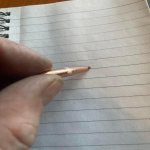I think you are suggesting the brass to be the issue. As mentioned earlier in this thread, a bullet I tried to close the bolt on, jammed hard enough to pull the bullet from the brass upon extraction. Cartridges that I closed till effort started being required, then pulled, clearly showed rub marks on the shank of the round, I'll try figure out how to put a pic up.
What I have found and done so far, believeing it to be a fouling issue in the throat of the rifle, is Hoppes 9 Copper solvent treatment. Run a saturated patch in, let it sit in the suspected trouble area for 10 minutes, push throught the bore. Followed by a rigourous brushing, a Hoppes 9 Copper patch, then dry patch till coming out clean. This morning my Sweets 7.62 arrived. I followed the directions, allowing the solvent to sit for 5 minutes, then dried out the chamber and bore. At this point, my reloads close effortlessly, as well as the Barnes factory rounds. The Hornady ELDXs still stick.
At least this tells me I am on the right track. I might have to get a bore scope or something, to tell me how far to go with this, but I figure if I go until the Hornadys fit, it should be good to go. I do have in the back of my mind that the Hornadys are a large bullet, and that this rifle might be chambered to tight to run them. But as those loads are in SAAMI spec, and this chamber should be as well, should be no reason they wont go.
This will obviously become part of my post range cleaning.
Mark
What I have found and done so far, believeing it to be a fouling issue in the throat of the rifle, is Hoppes 9 Copper solvent treatment. Run a saturated patch in, let it sit in the suspected trouble area for 10 minutes, push throught the bore. Followed by a rigourous brushing, a Hoppes 9 Copper patch, then dry patch till coming out clean. This morning my Sweets 7.62 arrived. I followed the directions, allowing the solvent to sit for 5 minutes, then dried out the chamber and bore. At this point, my reloads close effortlessly, as well as the Barnes factory rounds. The Hornady ELDXs still stick.
At least this tells me I am on the right track. I might have to get a bore scope or something, to tell me how far to go with this, but I figure if I go until the Hornadys fit, it should be good to go. I do have in the back of my mind that the Hornadys are a large bullet, and that this rifle might be chambered to tight to run them. But as those loads are in SAAMI spec, and this chamber should be as well, should be no reason they wont go.
This will obviously become part of my post range cleaning.
Mark








































































